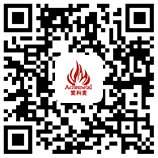Main Application and Main Raw Materials of Tungsten Crucibles
- Categories:Industry
- Author:
- Origin:
- Time of issue:2017-09-07 00:00
- Views:
(Summary description)Tungsten crucibles are mainly applied to rare earth metal metallurgy, induction furnace heating bodies, quartz glass smelting, etc., and can be used as a high-temperature vessel.Tungsten crucibles are mainly made of tungsten powder serving as a raw material.
Main Application and Main Raw Materials of Tungsten Crucibles
(Summary description)Tungsten crucibles are mainly applied to rare earth metal metallurgy, induction furnace heating bodies, quartz glass smelting, etc., and can be used as a high-temperature vessel.Tungsten crucibles are mainly made of tungsten powder serving as a raw material.
- Categories:Industry
- Author:
- Origin:
- Time of issue:2017-09-07 00:00
- Views:
Main Application of Tungsten Crucibles:
Tungsten crucibles are mainly applied to rare earth metal metallurgy, induction furnace heating bodies, quartz glass smelting, etc., and can be used as a high-temperature vessel.
Tungsten crucibles are mainly made of tungsten powder serving as a raw material.
Tungsten plate rolling can be divided into hot rolling, warm rolling and cold rolling. Due to large deformation resistance of tungsten, common rollers cannot completely meet the requirements of rolling tungsten plates, while rollers made of special materials should be applied. In the rolling process, rollers need to be preheated, and the preheating temperature is 100~350℃ according to different rolling conditions. Blanks can be machined only when the relative density (the ratio of the actual density to theoretical density) is higher than 90%, and have good processability at the density of 92~94%. The cogging temperature is 1,350~1,500℃ in the hot rolling process; if the cogging deformation process parameters are selected improperly, blanks will be layered. The starting temperature of warm rolling is 1,200℃; 8mm-thick hot rolled plates can reach the thickness of 0.5mm through warm rolling. Tungsten plates are high in deformation resistance, and the body of the roller can be bent and deformed in the rolling process, so the plates will form non-uniform thickness along the width direction, and may be cracked due to non-uniform deformation of all the parts in the roller exchange or rolling mill exchange process. The brittle-ductile transition temperature of 0.5mm-thick plates is room temperature or higher than room temperature; with brittleness, the sheets should be rolled into 0.2mm-thick sheets at the temperature of 200~500℃. In the later period of rolling, tungsten sheets are thin and long. To ensure uniform heating of plates, graphite or molybdenum disulfide are usually coated, which not only is beneficial for the heating of plates but also has a lubricating effect in the machining process.
Scan the QR code to read on your phone
News


 +8613526941255
+8613526941255

 Message
Message 